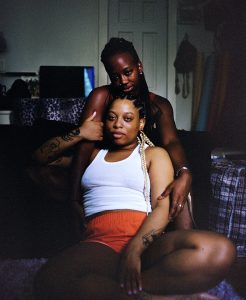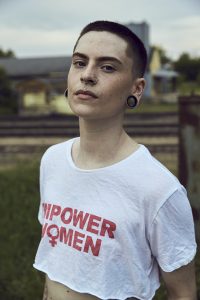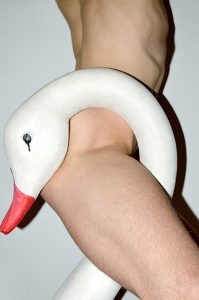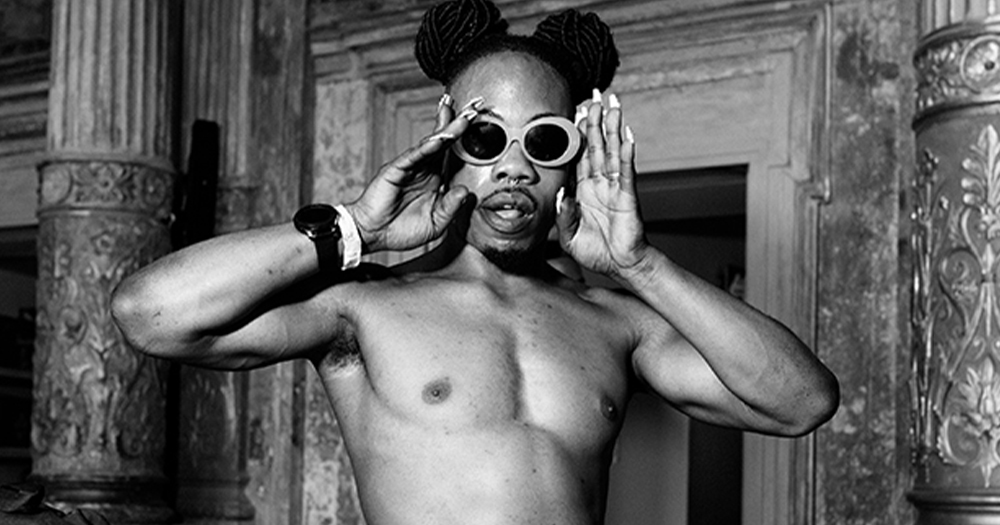In his latest book, new queer photography, Benjamin Wolbergs explores gender and sexuality in a dynamic and visually striking way. Sarah McKenna Barry caught up with Benjamin to chat inspiration, liminal spaces and the duty of an art director.
How did your inspiration for new queer photography first come about? Was there a spark, or a moment, or an idea that acted as a catalyst for the project?
Everything started about four years ago when I was working for the publishing house Taschen on the layout of a book about physique photography with photos from the 50’s, and the aesthetics and visual worlds of the book were clearly intended to appeal to a gay audience. In the course of this work, I asked myself: what would a book with contemporary queer photography look like? What photographers, topics, and styles would be included in such a book today?
Around that time, I became aware of the works of Matt Lambert and Florian Hetz, and I started to look for other queer photographers. As my research intensified, a universe of incredibly talented LGBTQI+ photographers emerged in front of me, characterised by a wide variety of different styles and visual worlds beyond clichés and preconceptions. This is how the idea of new queer photography was born.

In your forward, you mention the importance of focusing on the margins, both in terms of subject matter, and as an artistic principle. Could you speak on the power of queer photography to explore and celebrate these margins?
I think most people see living and working on the margins as a negative thing, which it is, of course, when you think of all the injustice and oppression that is happening there. But I also wanted to focus on the positive aspects of living on the margins: you can find so much solidarity, pride and empowerment within the queer community there.
Living on the margins can also create the very conditions that enable people to throw off the shackles of social norms and spread their wings in total freedom, exploring their gender identity in all its fluidity and playing with it in a natural and uninhibited way. Also individual perceptions and alternative ideals of beauty can be expressed and experienced more freely on the margins. And you can find all of this in new queer photography.

For the photographers represented in this book, working on the margins opens up unique opportunities. Isn’t a marginal perspective in many ways much more exciting than looking at things from the centre? Doesn’t working on the margins provide scope for a freer and more experimental creative process, very different from one that complies with and conforms to all the norms and expectations of mainstream society? And isn’t the margin of society a fertile ground that spawns great and exciting narratives and notable works of art?
new queer photography features work by established and less well-known photographers. How important was it to you to showcase up-and-comers side-by-side with more well-known names?
This was very important to me and even more important than presenting the work of already established photographers. There are some artists in new queer photography who haven’t been published in books before and I wanted to give them a platform to present their work.

As editor and art director, you play an integral role in the curation and presentation of the photos. What do you feel is your duty as editor? What principles guide you in your work?
I think the most important thing is to act with a huge sense of respect towards the artists and their work. Most obviously, there is the process of curating the photographs for the publication, which happened in a quite close and intensive cooperation with the artists.
Besides this, there are so many other aspects of paying tribute and respect to the contributors. For myself, as the art director of the book, it begins with the layout and choosing suitable materials for the book. But also the quality of these materials – like paper for the cover and inside pages – is very important. You can so easily ruin the content of a book by choosing cheap materials. And in the end, my duty is to decide on an appropriate publishing house that demonstrates respect towards the photographers.
And, above all, I wanted to satisfy the topic new queer photography with a diverse and ambitious artist selection.

new queer photography is available here. To stay up to date with Benjamin’s work, follow him on Instagram @benjaminwolbergs.
© 2021 GCN (Gay Community News). All rights reserved.
Support GCN
GCN is a free, vital resource for Ireland’s LGBTQ+ community since 1988.
GCN is a trading name of National LGBT Federation CLG, a registered charity - Charity Number: 20034580.
GCN relies on the generous support of the community and allies to sustain the crucial work that we do. Producing GCN is costly, and, in an industry which has been hugely impacted by rising costs, we need your support to help sustain and grow this vital resource.
Supporting GCN for as little as €1.99 per month will help us continue our work as Ireland’s free, independent LGBTQ+ media.
